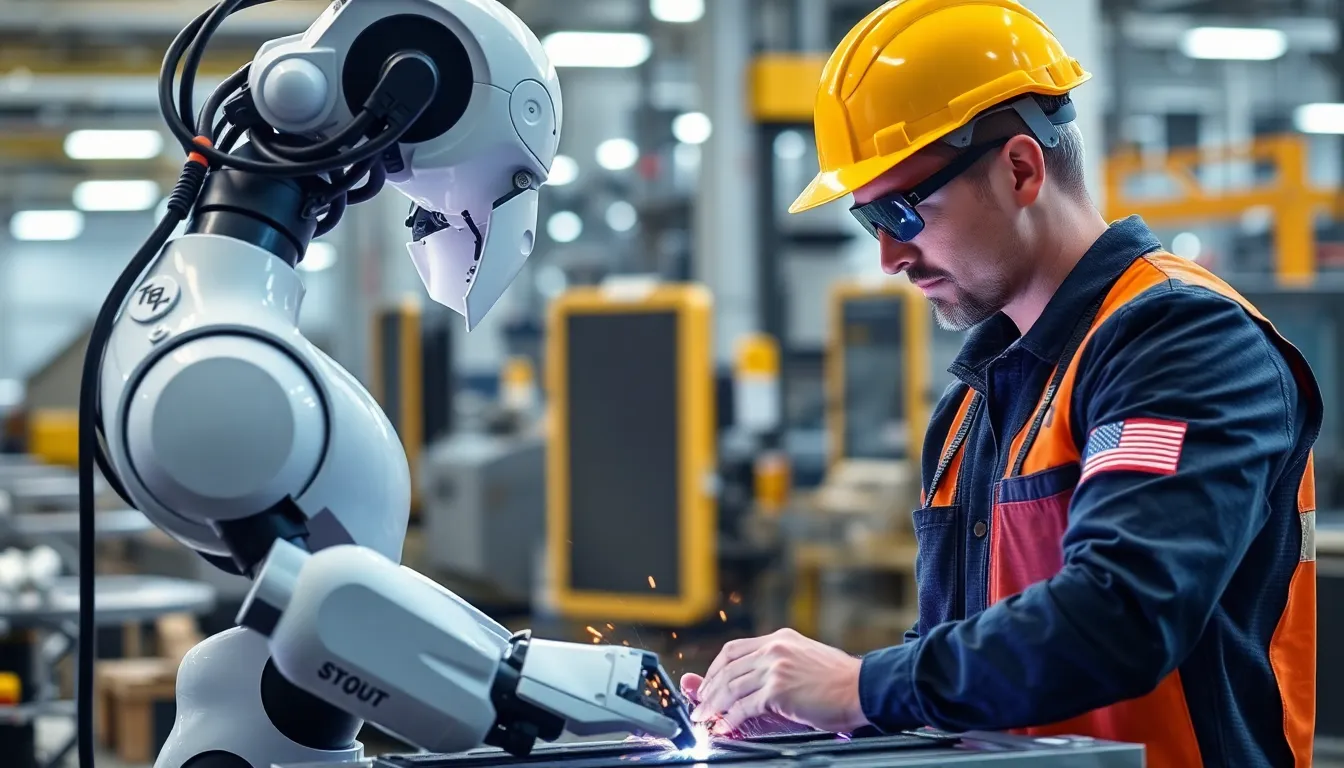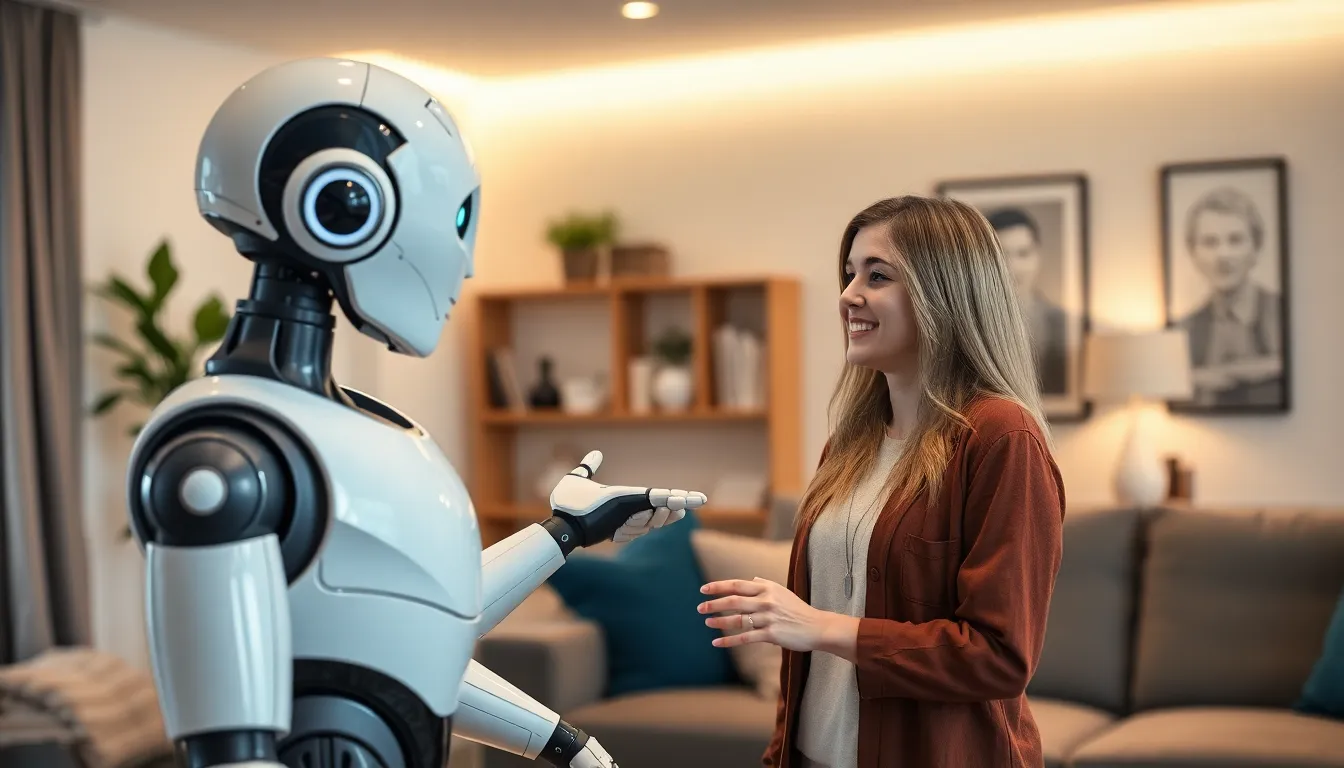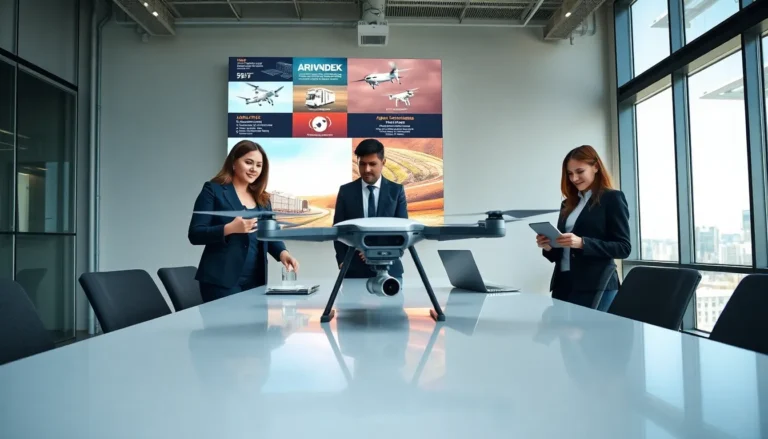Table of Contents
ToggleIn a world where robots are no longer just the stuff of sci-fi movies, AI robots are strutting their digital stuff and taking center stage. From smart assistants that can order pizza to humanoid companions that might just steal your heart (and your snacks), these machines are redefining what it means to be helpful.
Overview of AI Robots
AI robots represent a significant advancement in technology, integrating artificial intelligence into robotic systems. They serve various purposes across multiple sectors, leading to improved efficiency and enhanced user experiences. Smart assistants, like virtual home devices, execute tasks such as scheduling appointments and controlling smart home systems.
Humanoid robots also take on a different role, providing companionship and emotional support. These robots engage users in conversation, giving individuals a sense of connection. In industries such as healthcare, AI robots assist medical professionals by monitoring patients and managing administrative tasks. Automated systems enhance productivity while allowing humans to focus on complex decision-making.
AI robots utilize machine learning algorithms, enabling continuous improvement in their functionalities. Examples include robots that can learn user preferences over time, providing more personalized interactions. In manufacturing, AI robots streamline operations through automation, decreasing error rates and increasing speed.
The development of AI robots impacts daily lives significantly, from optimizing supply chains to enhancing entertainment experiences. They perform repetitive tasks, reducing human workloads and freeing time for more critical endeavors. With ongoing research and advancements, the potential applications for AI robots continue to expand.
Types of AI Robots

AI robots categorize into specific types based on their functions and applications. Understanding these classifications highlights how they contribute to various fields.
Industrial Robots
Industrial robots automate tasks on production lines. They perform welding, painting, assembly, and packaging efficiently. Many factories employ these robots to enhance productivity and ensure quality control. Utilizing precise algorithms, industrial robots minimize error rates. They operate continuously, reducing downtime and maximizing output. The reduction in labor costs significantly impacts overall manufacturing processes. Companies increasingly adopt collaborative robots, or cobots, that work alongside humans, enhancing workplace safety.
Service Robots
Service robots assist with routine tasks in public and private environments. They can deliver groceries, clean buildings, or provide customer support in hospitality settings. Many individuals encounter these robots in their daily lives; for instance, AI-powered vacuum cleaners handle floor cleaning independently. Service robots often navigate complex environments using sensors and cameras. Their ability to provide real-time feedback enhances user experiences and builds trust in technology. Healthcare facilities utilize service robots for patient monitoring and logistical support, streamlining operations and improving care delivery.
Personal Robots
Personal robots cater to individual needs and preferences. They function as companions or smart assistants in homes. Many families use robots like interactive toys that teach children or elderly care robots that provide companionship. Personal robots often include voice recognition and adaptive learning features, making them more engaging and effective. They manage daily tasks like scheduling, reminders, and entertainment. Their integration into smart homes promotes user-convenience while fostering a sense of emotional connection. As technology advances, personal robots become increasingly versatile and capable of understanding complex user interactions.
Benefits of AI Robots
AI robots offer numerous advantages across various sectors, significantly improving operations and user experiences.
Increased Efficiency
AI robots enhance productivity through automation, enabling consistent performance in tasks such as assembly line work in manufacturing. Routine assignments get completed faster, allowing human workers to focus on high-value activities. As a result, businesses witness significant reductions in operational costs and improved output. In environments like warehouses, robots efficiently manage inventory by organizing and retrieving items swiftly. Additionally, AI robots continuously learn and adapt their processes based on data, ensuring optimized workflows over time.
Enhanced Safety
AI robots contribute to safer work conditions by undertaking hazardous tasks that pose risks to human workers. In construction and manufacturing, these robots perform dangerous operations, minimizing the likelihood of accidents and injuries. Monitoring systems ensure real-time surveillance, enabling early detection of potential hazards. Moreover, robots used in service industries help manage and sanitize environments, reducing the spread of infections. By implementing AI robots, organizations prioritize the well-being of employees while maintaining productivity levels.
Challenges and Concerns
AI robots bring notable challenges and concerns that demand attention. As these technologies evolve, ethical dilemmas and job displacement issues arise.
Ethical Considerations
Ethical implications surrounding AI robots raise important questions. Privacy concerns emerge as these robots collect and analyze personal data. Transparency becomes crucial; users should understand how data is utilized and safeguarded. Additionally, programming biases can lead to ethical dilemmas, influencing decisions in critical areas like healthcare and law enforcement. Developers must be diligent, ensuring algorithms reflect fairness. Moreover, the emotional attachment humans may form with robots prompts discussions about dependency and the impact on social interactions.
Job Displacement
Job displacement presents a significant challenge with the rise of AI robots. Many traditional roles experience automation, leading to workforce reductions in various industries. Factory jobs, for instance, increasingly face replacement by industrial robots designed for precision and efficiency. Service industries also encounter shifts, as robots take on routine tasks like food delivery and customer service. This transition can cause economic disruption, particularly among lower-skilled workers. Reskilling programs are essential to equip individuals for new opportunities created by AI technologies. Addressing these challenges requires proactive measures to balance technological advancements with workforce stability.
Future of AI Robots
AI robots are set to transform numerous industries, adapting to evolving needs and challenges. Automation will likely redefine job roles, allowing workers to focus on more complex tasks while robots handle repetitive actions. In healthcare, advancements promise improved patient monitoring, directly influencing care quality. Enhanced companionship through humanoid robots may foster emotional well-being, leading to increased demand in social sectors.
Adoption rates for AI robots in service and manufacturing continue to grow. Businesses recognize the value of implementing robots to optimize processes and minimize costs. Enhanced inventory management systems leverage AI for efficiency, substantially lowering operational expenses. Increased safety measures arise as robots take on hazardous duties, protecting human workers from dangerous environments.
Technological developments will prioritize ethical considerations, ensuring privacy and data protection are upheld. Developers must focus on transparency regarding data usage to cultivate trust among users. Responsible AI will guide the creation of algorithms that mitigate biases in critical sectors, including healthcare and law enforcement.
Future research efforts may explore collaborative humanoid robots in workplaces. Human-robot interactions could redefine teamwork, making collaboration seamless and efficient. Addressing job displacement proactively presents a necessary challenge but creates opportunities for workers to transition into new roles.
Society will likely emphasize the importance of education and reskilling. Programs designed to equip individuals for emerging job markets will become essential. As AI robots permeate daily life, their potential benefits will become clearer, driving society forward while balancing technological growth and workforce stability.
The rise of AI robots marks a pivotal moment in technological advancement. Their integration into various sectors not only enhances efficiency but also redefines human-robot interactions. As these robots continue to evolve, they promise to reshape industries and improve daily life.
Addressing ethical concerns and job displacement remains crucial as society navigates this transformation. Emphasizing education and reskilling will help ensure a smooth transition into a future where humans and robots collaborate effectively.
With ongoing advancements, AI robots are poised to play an even more significant role, offering new opportunities and challenges that will shape the future landscape of work and personal life.






